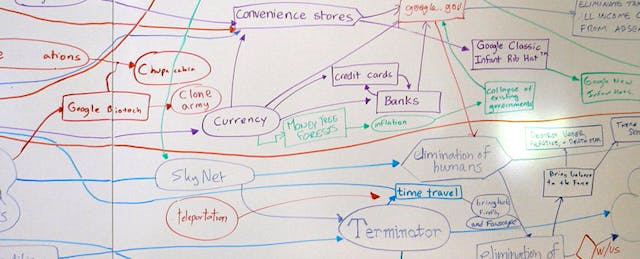The term "personalized learning" is everywhere these days, but its ubiquity has done little to imbue it with a consistent meaning. Often, advocates of personalized learning envision students being targeted with material geared to each student's unique skill level. The promise of many adaptive learning technologies is that an entire classroom of student can work on such optimized lessons at the same time.
But there's also another way learning can be personalized, and it has little to do with a student's skill level per se. Students have unique interests, and over time they acquire a large body knowledge related to them. By personalizing a lesson so that it resides within a domain of interest, students may be able to make better sense of the abstract concepts.
For example, imagine an elementary school student who is a sports aficionado but struggles with an algebra problem that describes prices at the supermarket. What might happen if the exact same problem is instead described in terms of three-point shooting and points scored? The student's familiarity with the basketball variables could not only make the problem easier to solve, but also help the student understand analogous relationships between variables in other domains.
All that could happen in theory, but there are still two big questions: Is it feasible to create a system that give lessons tailored to students' interests, and if it is, would it actually have an impact on learning?
A new study (pdf) led by Candace Walkington of Southern Methodist University provides initial evidence that the answer to both questions is yes. Walkington examined 145 high school algebra students who were using Carnegie Learning’s Cognitive Tutor Algebra (CTA) software. The CTA system contained 10 different units, but her experiment involved only unit six. After giving students a survey in which they rated their interest in nine different areas (sports, music, movies, TV, games, art, computers, food, and stores), half the students were given one of four new variations of unit six in which problems were tailored to their interests. Crucially, while the context and story behind the problems differed from the original, the mathematical structure of the problems was the same. The analysis focused on how students performed on "knowledge components" that were rated easy, medium, or hard. The only "hard" knowledge component was the important task of transforming word problems into algebraic expressions that would generate solutions.
Here's what Walkington found: Students who received personalized lessons were significantly better than students in the control condition at writing algebraic expressions in both unit six and unit 10. That is, students in the personalized condition continued to be better at generating algebraic expressions long after the experimental manipulation had been removed. The effect of personalization was also quite strong for low achieving students. In unit 6, low-achievers had a 58% success rate on writing algebraic expressions whereas those in the control condition had only a 25% success rate.
Personalization also had an impact on the efficiency of student learning. Compared to the control group, students in the personalization condition spent significantly less time reading and solving problems. Practice was also more efficient for students in the personalized condition; each practice opportunity improved the odds of a correct answer by 1.08 in the personalized condition but only by 1.04 in the control condition.
Walkington explains the significance:
The finding that personalization improves such deep-level processing measures supports Renninger et al.’s (2002) conclusion that interest-based interventions in mathematics allow learners to build important connections between the context and the mathematical content.
[…]
The robust learning gains for Unit 10 challenge the notion that personalization is a crutch whose effects will not persist or transfer to the solving of nonpersonalized problems. Instead, the results suggest that personalization acts as a scaffold, providing grounding for students as they learn important skills relating to coordinating situation and problem models when writing algebraic expressions. Students may be able to later flexibly apply these skills to normal story problems with more complex underlying algebraic expressions.
The study dovetails nicely with work done by Na'ilah Suad Nasir and Carol Lee on the importance of embedding learning in culturally relevant contexts. The type of personalization in Walkington's experiment was rudimentary compared to that found in the work of Nasir--who examined mathematical thinking during games of dominoes--and Lee--who investigated the impact of culturally relevant literature on literacy. Still, Walkington’s findings support the idea that there's more to learning than the bare bones structure of a lesson, and perhaps more importantly, that technology can be used as a means to add on to that structure.
Several edtech startups are starting down this path. Mathalicious offers math instructional videos in the context of sports and other real-world scenarios. NoRedInk embeds grammar lessons and exercises in sentences about pop artists and cultural icons that match students' interests.
When it comes to "personalized learning," the personalization of lesson context will likely continue to take a backseat to personalization based on targeting specific skills. And that's probably as it should be. After all, Walkington's study consisted of a single experiment on a single tutoring system, and the gains from personalizing targeted skills are likely to be larger. But Walkington's study suggests that personalizing the context around algebra lessons can have longer-lasting benefits in other knowledge domains.


